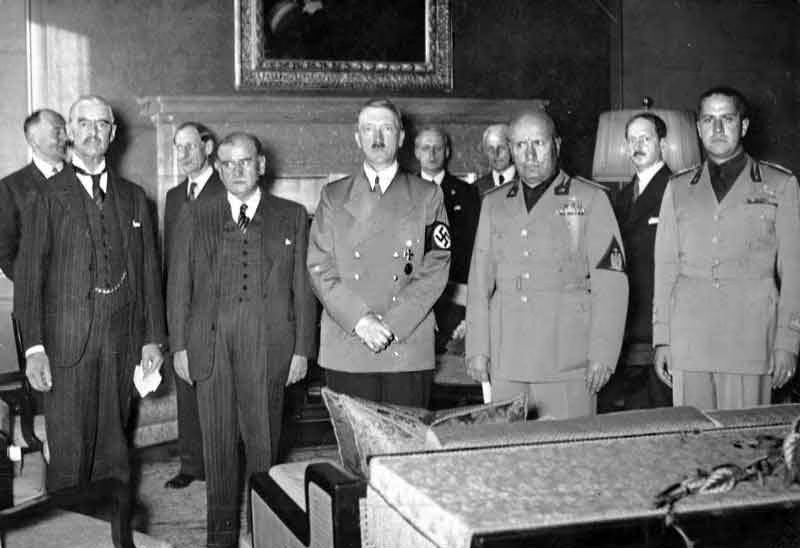
STOCKHOLM – Will US President Donald Trump’s vision of building an impregnable missile-defense system be the final nail in the coffin for strategic nuclear arms control? Given that his proposed “Golden Dome” could trigger an expensive and destabilizing strategic arms race, Trump’s dream could be the world’s nightmare.
At a minimum, Trump’s proposed system would represent a dangerous paradigm change. Through the final decades of the Cold War, and for another decade thereafter, dramatic reductions in nuclear arsenals led to strategic stability. Throughout this period of progress on arms control, peace was maintained through deterrence, which itself rested on the shared recognition of mutual assured destruction. This concept (appropriately abbreviated as MAD) was explicitly codified in the 1972 Anti-Ballistic Missile Treaty, according to which the United States and the Soviet Union agreed not to build any defensive shields against strategic nuclear strikes.
Despite the seeming recklessness of the concept, the persistent risk of a nuclear attack is widely seen to have prevented a nuclear exchange during the Cold War. MAD had made a direct conflict too dangerous to countenance. Neither side had any interest in allowing for a war that would guarantee its own destruction. Instead, the Cold War was waged on the margins, often through proxies. And though there were exceptionally dangerous moments – like the 1973 Arab-Israeli War, when both the US and Soviet Union went on nuclear high alert – no direct violent confrontation ever took place.
Occasionally, political leaders would dream of alternative arrangements. US President Ronald Reagan, for example, envisioned a world without nuclear weapons, and launched the ambitious Strategic Defense Initiative (“Star Wars”) to create a space-based missile-defense system. But the idea proved prohibitively expensive, and it probably never would have worked in practice.
Then, in 2002, US President George W. Bush abandoned the agreement to limit strategic defenses, allowing for the system that America has in place today. But these defenses are quite limited, mostly unproven, and oriented largely toward intercepting a couple of North Korean missiles. Should Russia ever decide to launch nuclear-armed warheads en masse, current US defenses would be easily overwhelmed.
Nonetheless, Bush’s decision led Russian President Vladimir Putin to pour resources into developing weapons that could bypass future US defenses. These include a nuclear torpedo with near global range, which could certainly evade conventional missile defenses, and a nuclear-powered cruise missile with unlimited range, which could perhaps sneak in from Mexican airspace. Despite decades of work, neither of these weapons systems is close to being operational. But all that remains from the previous decades of arms-control efforts is the Strategic Arms Reduction Treaty, which Russia suspended in 2023 and which is set to expire in February next year if nothing happens.
This is the context in which Trump has proposed his Golden Dome. While his boisterous talk of “forever ending the missile threat to the American homeland” bears no relation to reality, his administration is sure to allocate hundreds of billions of dollars to develop systems of increasing sophistication but questionable effectiveness. Worse, Russia and China will see these initiatives as threats to their own strategic nuclear arsenals’ viability. If they conclude that they are vulnerable and the US is not, the nuclear calculus will change.
This is especially true for Russia, whose strategic nuclear strength is central to its claim to still be a superpower. The risk of negating Russia’s nuclear-strike capability could instill near-existential fear in the hearts of Russian strategic planners. And the view from China would be similar, though the fear would be less acute, since Chinese power has a much broader base.
If the US spends tens of billions on missile defense, Russia will have to spend whatever it can on trying to neutralize those new capabilities. Whether Russia can afford such an effort is far from certain. Obviously, it would have to abandon other priorities. Its faltering space program exposes the financial difficulties it is already facing. Still, such changes would not necessarily be conducive to global stability. While the old strategic arms control regime made clear where everyone stood, the situation would now be more fluid and uncertain.
The bilateral strategic relationship between the US and Russia was difficult enough to manage. A trilateral one that also included China – with its growing nuclear arsenal – would be far more complicated, and one that also involved France and Britain would be downright messy. And the messier the arrangement, the more likely it is that misunderstandings or marginal conflicts will escalate into something more dangerous.
For their part, Putin and Chinese President Xi Jinping both describe the Golden Dome proposal as “a complete and ultimate rejection of the recognition of the inseparable interrelationship between strategic offensive arms and strategic defensive arms.” They are not wrong. But nor do they offer any ideas about how to manage the risks better.
With Russian and Chinese fears growing, the Golden Dome, ironically, is unlikely to ensure US security. We have just seen that not even hyper-sophisticated Israeli and US systems together can prevent numerous Iranian missiles from hitting central Tel Aviv. And with nuclear warheads, it only takes one missile.
There are no simple solutions. Although the dream of creating an impregnable defensive system will never die, the logic of nuclear stability is straightforward. Even in these difficult times, at least some form of dialogue between the relevant powers is a must.
Subscribe to Our Newsletter
Get the latest CounterCurrents updates delivered straight to your inbox.
Carl Bildt is a former prime minister and foreign minister of Sweden.
Copyright: Project Syndicate, 2025.
www.project-syndicate.org














































